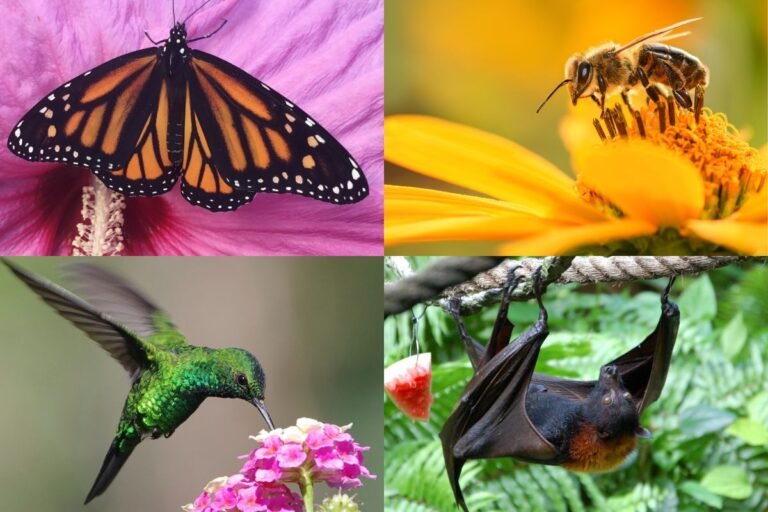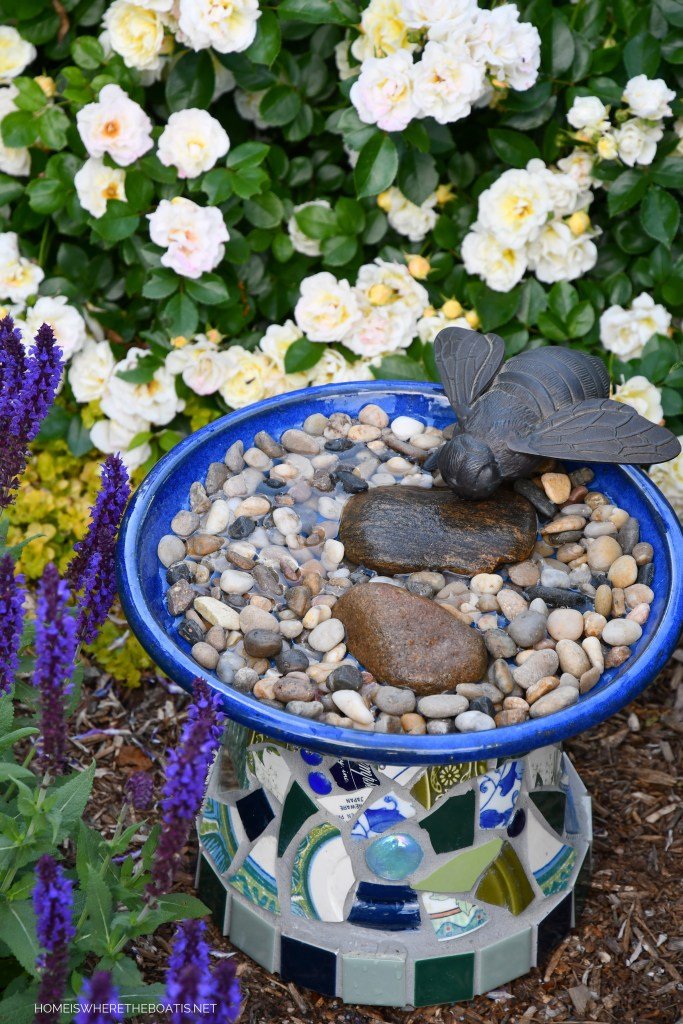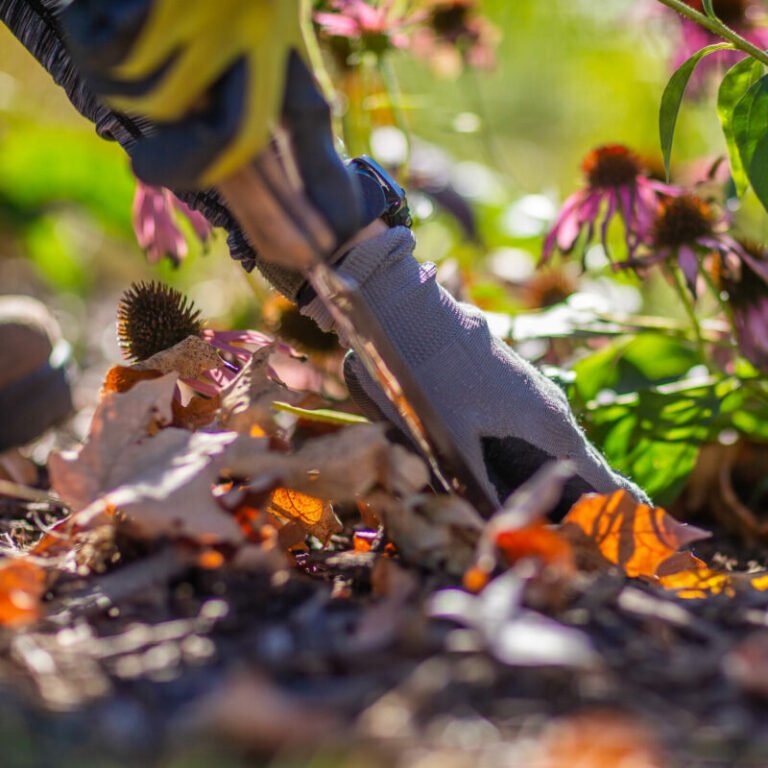Your garden can become a haven for bees, butterflies, and birds with the right water source. These pollinators play a crucial role in our ecosystem.
Imagine a spot in your garden where colorful butterflies flutter and bees buzz, all stopping by for a sip of water. This is not only a charming sight but also essential for the health of your local environment. You may wonder why such a water source is important.
Pollinators need water just like any other living creature, but they require safe and accessible spots to hydrate. A pollinator-friendly water source can make a huge difference to these small visitors. In this introduction, let’s explore how simple additions to your garden can provide a vital resource for pollinators and bring your outdoor space to life. With a few easy steps, you can create an inviting and life-sustaining feature that supports the biodiversity right in your backyard. Whether you have a sprawling garden or a modest balcony, every effort counts in making a positive impact on the natural world. Let’s get started on this rewarding journey to aid our little winged friends!

The Importance Of Pollinators In The Garden
Gardens thrive when pollinators buzz from plant to plant. These tiny workers play a huge role. They help plants grow, breed, and produce food. Without them, many plants would not be able to reproduce. This could lead to fewer fruits and vegetables for us.
Roles Of Bees, Butterflies, And Birds
- Bees are top pollinators. They search for nectar and pollen. As they move, they spread pollen between flowers. This helps plants produce seeds.
- Butterflies add color and life. They sip nectar with their long tongues. They carry pollen on their bodies.
- Birds, like hummingbirds, love sweet nectar too. Their feathers brush against flowers. They transfer pollen as they fly.
Impact On Biodiversity And Food Production
Pollinators are key to biodiversity. They help over 75% of our flowering plants reproduce. They are vital for about 35% of global crop production. Without them, ecosystems would struggle. Our food supply would suffer.
Understanding Pollinator Needs
Pollinators like bees, butterflies, and hummingbirds play a key role in our gardens. They need food, shelter, and water to survive. Creating a water source in your garden not only helps them thrive but also boosts plant health. Let’s explore how to meet their water needs and create inviting habitats.
Water Requirements For Pollinators
Pollinators need water for drinking and cooling. But deep water can be a danger to them. They prefer shallow sources where they can land and sip safely. Let’s see how to do this right.
- Provide shallow edges in bird baths.
- Add rocks or marbles for landing spots.
- Keep water fresh to avoid diseases.
Preferred Environments And Habitats
Diverse plants attract more pollinators. They love sunny, wind-sheltered spots. Native plants are best, as they evolved with local pollinators. Here’s what to include in your garden.
- Flowers with various shapes and colors.
- Plants that bloom at different times.
- Untreated wood and bare soil for nesting.
Elements Of A Pollinator-friendly Water Source
Creating a pollinator-friendly water source in your garden is simple. Pollinators need water just like we do. But, their needs are different. Let’s explore what makes a water source friendly for them.
Shallow Water Zones
Bees, butterflies, and other pollinators cannot swim. They need shallow water to drink safely. Think of it like a puddle, not a pool. A shallow dish filled with stones or marbles and water does the trick. This way, they can land and drink without the risk of drowning.
Safe Landing Spots
Pollinators need places to rest too. Especially when they come to drink. By adding safe landing spots, you make it easier for them. Use large leaves, floating plants, or even sticks across a bowl of water. These spots help them take a break and hydrate safely.
- Fill a shallow dish with water.
- Add stones, marbles, or sand to create shallow zones.
- Place floating plants or sticks for safe landing.
Remember, clean water is key. Change the water often to keep it fresh and safe. With these simple steps, your garden will become a haven for thirsty pollinators.

Choosing The Right Location
Creating a haven for pollinators means more than just planting flowers. A water source is vital. But where should it go? Let’s explore.
Accessibility For Pollinators
Place the water source where bees and butterflies can easily reach it. Ground level works best. Make sure it’s visible and near flowers.
- Keep it close to nectar sources.
- Choose a spot with morning sun to attract early risers.
- Ensure no tall barriers block the path of flying friends.
Protection From Predators
Keep your pollinator pals safe. A spot with shelter from birds and other predators is key. Think about cover like bushes or low-hanging branches.
| Feature | Benefit |
|---|---|
| Overhead Canopy | Shields from aerial predators |
| Nearby Plants | Quick escape routes |
| Shallow Water | Prevents drowning |
Designing Your Water Source
Designing Your Water Source is key to attracting pollinators to your garden. Create a spot where bees, butterflies, and birds can drink and bathe. Let’s explore how to make this happen.
Diy Birdbaths And Puddles
Building a birdbath or puddle is simple. You need shallow dishes and a few stones. Fill dishes with clean water. Place them around your garden. Make sure to change the water often.
- Use wide, shallow dishes – they are safe for small insects.
- Add rocks or marbles – these give pollinators a place to land.
- Keep it shallow – just an inch of water will do.
Incorporating Natural Elements
Use what nature gives you. Logs, stones, and plants can make great water sources. They blend in with your garden. Pollinators love them.
- Place logs in a shady area – they hold moisture for butterflies.
- Arrange stones with depressions – they catch rainwater.
- Plant water-loving species – they offer natural sips for bees.
Plant Selection Around The Water Source
Creating a pollinator-friendly water source in your garden is key. The plants you choose to surround your water source are vital. They attract and shelter various pollinators. Let’s discuss the best plants for this purpose.
Attracting A Diverse Pollinator Population
To attract many types of pollinators, variety is crucial. Different pollinators prefer different plants. Bees, butterflies, and birds all have unique needs.
- Flowering plants bring in bees and butterflies.
- Hummingbird feeders or red flowers attract hummingbirds.
- Water plants like water lilies provide landing spots.
Choose plants that bloom at various times. This way, your garden offers food across seasons.
Using Native Plants To Provide Shelter
Native plants are best for local wildlife. They offer the right shelter and food. They are also easy to care for.
- Research your area’s native plants.
- Pick plants that grow well in your garden’s conditions.
- Include plants of different heights for shelter variety.
Grasses and shrubs are great for ground-nesting bees. Tall trees can house birds and bats.
Remember, the goal is to create a safe, welcoming space for pollinators. Your garden will thrive as a result.
Maintaining Your Pollinator Water Source
Maintaining Your Pollinator Water Source is key to a thriving garden ecosystem. Your pollinator-friendly water feature needs care to serve its purpose. Let’s dive into the essentials of keeping it in top condition.
Regular Cleaning And Refilling
Keep water fresh and inviting for bees, butterflies, and other pollinators.
- Empty and scrub the water source weekly.
- Use mild soap and a brush to remove algae and dirt.
- Rinse thoroughly to ensure no soap remains.
- Refill with clean water regularly.
Bold action like this prevents disease and keeps pollinators safe.
Monitoring For Mosquito Activity
Stagnant water attracts mosquitoes. Check for larvae often.
| Frequency | Action |
|---|---|
| Daily | Inspect for mosquito eggs or larvae. |
| Weekly | Change water to disrupt mosquito life cycle. |
Add a few drops of safe, natural oil to the surface. This creates a barrier that prevents mosquito breeding.

Expanding Beyond Water: Creating A Pollinator Paradise
Expanding Beyond Water: Creating a Pollinator Paradise goes beyond a simple water source. It’s about crafting an environment where bees, butterflies, and other pollinators thrive. A garden should offer more than just hydration. It should be a haven for these essential creatures. Let’s explore how to transform your green space into a sanctuary for pollinators.
Integrating Pollinator-friendly Plants
Choose plants that pollinators love. These should provide nectar and pollen. Flowers with various shapes and colors will attract a diverse group. Some top picks include:
- Lavender – loved by bees
- Coneflowers – a hit with butterflies
- Sunflowers – they feed bees and birds
Remember to plant in clumps. This makes it easy for pollinators to spot their next meal.
Building Habitats For Nesting And Overwintering
Pollinators need homes. Offer them a place to rest and raise their young. Here’s how:
| Feature | Description | Benefit |
|---|---|---|
| Bee Hotels | Wooden structures with holes | Shelter for solitary bees |
| Brush Piles | Heaps of twigs and leaves | Hideouts for many insects |
| Mulch | Layer of organic material | Protects ground dwellers |
These habitats support pollinators year-round. They offer safety during cold months.
Frequently Asked Questions
What Plants Attract Pollinators To Water Sources?
Pollinators are attracted to shallow water sources surrounded by native, flowering plants. Plants like lavender, salvia, and coneflowers are excellent choices. Position them near your water feature to provide a safe landing spot and encourage pollinators to visit and hydrate.
How Do You Make A Bee-safe Water Station?
To create a bee-safe water station, use a shallow dish and fill it with stones or marbles. Add water just enough to cover the bottom, ensuring bees can land on the solid surfaces to drink without drowning. Place it in a shaded area near pollinator-friendly plants.
Can Butterflies Use The Same Water Sources As Bees?
Yes, butterflies can use the same water sources as bees. However, they require slightly different setups. Incorporate sandy or muddy areas around your water feature. Butterflies enjoy “puddling” in these spots to extract minerals and salts, in addition to drinking water.
What Maintenance Does A Pollinator Water Source Require?
Regular maintenance is crucial for pollinator water sources. Change the water every few days to prevent mosquito breeding and remove any debris. Ensure the water level is consistent and the access points are clean. This keeps the water source safe and inviting for pollinators.
Conclusion
Creating a sanctuary for pollinators is simpler than you might think. Just add a water feature they can use. Bees, butterflies, and birds will thank you. Your garden will burst with life and color. Remember, shallow water sources work best.
Keep them clean and fresh. Use pebbles and sticks for safe landing spots. Your efforts support vital ecosystems. Together, we make our world more vibrant. Start today. Make a difference with just water and a little care. Your pollinator-friendly garden awaits!



